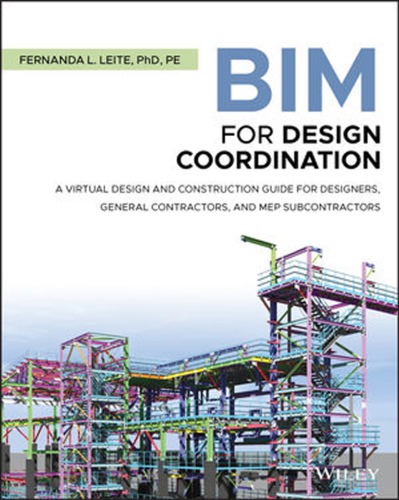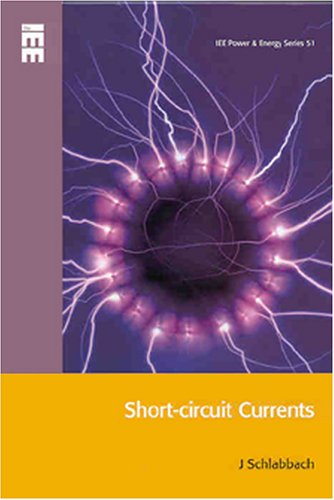| Book Name: | [PDF] The Whole Building Handbook How to Design |
| Category: | Civil Engineering Books |
| Language: | English |
| Format: | |
| Free Download: | Available |

| Book Details : | |
|---|---|
| Language | English |
| Pages | 1156 |
| Format | |
| Size | 45.7 MB |
The Whole Building Handbook How to Design
The Whole Building Handbook How to Design Healthy, Efficient, and Sustainable Buildings by Varis Bokalders and Maria Block | PDF Free Download.
The Whole Building Contents
Healthy Buildings
- Materials and Construction Methods
- Services
- Construction
- Implementation
Conservation
- Heating and Cooling
- Efficient Use of Electricity
- Clean Water
- Waste
Eco cycles
- Renewable Heat
- Renewable Electricity
- Sewage
- Vegetation and Cultivation
Place
- Adaptation to Natural Surroundings
- Social Fabric
- Existing Buildings
- People
Introduction to The Whole Building Handbook How to Design
There is overwhelming scientific evidence that environmental problems, including climate change, are a serious global threat, demanding an urgent global response.
Many researchers and analysts warn that we have only a few decades in which to achieve sustainable development, to prevent catastrophic environmental changes.
The design and methods of construction of our built environment our homes, workplaces, and cities – have an enormous impact on both the global environment and locally on the communities that inhabit them.
Creating a sustainable built environment is, therefore, a crucial part of the transformation needed to achieve true sustainability.
Environmental Changes and Impacts
Human activities and the technologies we use can cause many problems. Our extensive use of fossil fuels and hazardous chemicals pollute the atmosphere, water, and soil – the essential commodities for our survival.
Burning of fossil fuels discharges carbon oxides (COx ), sulfur oxides (SOx ), and nitrogen oxides (NOx ), which affect the climate and the ozone layer and contribute to the acidification of soil and water.
Many current human activities, including the burning of fossil fuels and massive deforestation, cause increased CO2 and other ‘greenhouse gas’ levels in the atmosphere.
This creates the enhanced greenhouse effect, heating up the average global temperature and causing climate change. Calculations show that a temperature increase of 1.6–6°C is possible, which would lead to a 15– 100cm rise in ocean water levels.
There will be a shift in climatic zones over a large part of the Earth. Extreme weather conditions such as storms, floods, and drought will become more common.
The social and economic impacts of climate change could be huge. In 2006, Sir Nicholas Stern, former Head of the British Government Economic Service and Adviser to the Government on the economics of climate change and development, wrote a report on the economics of climate change.
He reported that the stabilization of CO2 levels requires that annual emissions be brought down to at least 80 percent below current levels.
The cost of an action was estimated to be limited to around 1 percent of global GDP each year if adequate action were to be taken immediately. Since then, Stern has revised this up to 2 percent of GDP because global warming is happening faster than previously predicted.
If no action is taken, the cost could be between 5 and 20 percent of GDP each year, now and forever. And it will be difficult or impossible to reverse the changes.
Population growth and our over-exploitation of resources also cause massive problems. It is currently believed that oil reserves will last for 30 years, natural gas reserves for 70 years, and coal reserves for 250 to 300 years.
Freshwater is scarce and unequally distributed, groundwater reserves are being used up, and water is being polluted so that it is undrinkable, meaning that water management will very soon be one of the world’s greatest problems.
Arable land is a limited resource: fertile topsoil is being lost because of erosion and agricultural land is being destroyed by salinization, waterlogging, and the building of cities on arable land. The seas and oceans are heavily over-fished; without a decrease of current fishing, many fish stocks will disappear.
Considerable deforestation is taking place in many parts of the world, especially in the tropical rainforests. Biological and genetic depletion is increasing both on land and in the water. Cheap fossil fuels have made possible a growth in population that is without historical precedent.
According to predictions, the global population will increase from 6.7 billion in 2007 to 9 billion in 2050. How large a population can our Earth support?
Sustainable Development
The 1987 Brundtland Commission’s report, Our Common Future, at the request of the United Nations, established an ethical principle that should be self-evident: ‘We must satisfy our generation’s needs without destroying the opportunities for future generations to satisfy their needs.’
It was the Brundtland Commission that launched the concept of ‘sustainable development’. The task the United Nations gave to the countries of the world was to merge technology, economics, and sustainable development with a new lifestyle based on equity.
It is thus a question of ecological, economic, and social sustainability. Human survival and human welfare may depend on our success in transforming principles of sustainable development into a global ethic: ‘thinking globally and acting locally’.
Conventional economic practices take no account of vital natural assets that have no monetary price, such as clean air, clean water, nature, etc.
A country’s wealth and well-being are typically judged by its GNP. A re-evaluation of the GNP concept, where negative environmental effects are included as minus amounts in a country’s welfare – a green GNP – would be a better measure of national economic development.
In Balance with Nature
Planning a sustainable society requires a holistic approach in which we learn from and cooperate with nature.
Our planet and its ecosystems are a complex whole where plants, animals, people, and micro-organisms all form an integral part: everything is connected to everything else, nothing disappears, everything must go somewhere.
We can take from this some fundamental principles for environmental sustainability, including renewable resources must be managed in a sustainable way; non-renewable resources must be recycled; air, water, and soil need to be kept clean and biodiversity has to be maintained.
Sustainable Building
A very large proportion of the energy used in the world, and the greenhouse gases that are released from this energy use, is connected to the building sector.
It is clear that no move towards sustainable development can go ahead without radical changes in architecture, construction, and spatial planning.
We are now seeing a huge drive to conserve energy, increase efficiency, and create zero-carbon buildings, all of which are vital in reducing the environmental impacts of buildings.
But building sustainably must also take a broader approach, including the whole impact of a building – on the environment, people’s health, and social well-being throughout its whole lifetime.
In order to build truly sustainable buildings and cities, architects and planners need to think holistically and have a comprehensive grounding in all aspects of sustainable building.
The Whole Building Handbook: How to Design Healthy, Efficient and Sustainable Buildings PDF
Author(s): Varis Bokalders, Maria Block
Publisher: Earthscan Publications Ltd., Year: 2010
ISBN: 1844075230
Download The Whole Building Handbook How to Design by Varis Bokalders & Maria Block PDF Free
Related Results : the whole building handbook how to design healthy efficient and sustainable buildings,
Related More Books
See More POST On : Engineering Books









![[PDF] Draw Buildings and Cities in 15 Minutes Draw Buildings and Cities in 15 Minutes pdf](https://www.freepdfbook.com/wp-content/uploads/2021/06/Draw-Buildings-and-Cities-in-15-Minutes-218x150.jpg)








![[PDF] Digital Image Processing An Algorithmic Introduction Using Java Digital Image Processing An Algorithmic Introduction Using Java](https://www.freepdfbook.com/wp-content/uploads/2022/06/Digital-Image-Processing-An-Algorithmic-Introduction-Using-Java.jpg)




![[PDF] 43 Years JEE ADVANCED + JEE MAIN Chapterwise & Topicwise Solved Papers 43 Years JEE ADVANCED (1978-2020) + JEE MAIN Chapterwise & Topicwise Solved Papers Physics PDF](https://www.freepdfbook.com/wp-content/uploads/2022/03/43-Years-JEE-ADVANCED-1978-2020.jpg)

![[PDF] Problems in Physical Chemistry for JEE (Main & Advanced) Problems in Physical Chemistry for JEE (Main & Advanced) Free PDF Book Download](https://www.freepdfbook.com/wp-content/uploads/2022/03/Problems-in-Physical-Chemistry-for-JEE-Main-Advanced.jpg)
![[PDF] Engineering Physics (McGraw Hill)](https://www.freepdfbook.com/wp-content/uploads/2021/05/bafc8c2685bb6823a9c56134f7fba5df.jpeg)

![[PDF] Engineering Chemistry By Shashi Chawla](https://www.freepdfbook.com/wp-content/uploads/2022/05/Theory-And-Practicals-of-Engineering-Chemistry-By-Shashi-Chawla-free-pdf-book.jpeg)
![[PDF] Chemistry: An Introduction to Organic, Inorganic & Physical Chemistry Chemistry: An Introduction to Organic, Inorganic & Physical Chemistry](https://www.freepdfbook.com/wp-content/uploads/2022/04/Chemistry-An-Introduction-to-Organic-Inorganic-Physical-Chemistry.jpg)
![[PDF] Essentials of Physical Chemistry Essentials of Physical Chemistry Free PDF Book by Bahl](https://www.freepdfbook.com/wp-content/uploads/2022/04/Essentials-of-Physical-Chemistry-bahl.jpg)
![[PDF] Biological control of plant-parasitic nematodes: soil ecosystem management in sustainable agriculture Biological control of plant-parasitic nematodes: soil ecosystem management in sustainable agriculture](https://www.freepdfbook.com/wp-content/uploads/2022/05/Biological-control-of-plant-parasitic-nematodes-soil-ecosystem-management-in-sustainable-agriculture.jpg)
![[PDF] Human Anatomy: Color Atlas and Textbook Human Anatomy: Color Atlas and Textbook Free PDF Book](https://www.freepdfbook.com/wp-content/uploads/2022/05/Human-Anatomy-Color-Atlas-and-Textbook.jpg)
![[PDF] Concepts of Biology Book [Free Download]](https://www.freepdfbook.com/wp-content/uploads/2022/05/Concepts-of-Biology.jpg)
![[PDF] Essentials of Biology [Free Download] Essentials of Biology Free PDF BOok Download](https://www.freepdfbook.com/wp-content/uploads/2022/05/Essentials-of-Biology-Free-PDF-Book-Downlaod.jpg)
![[PDF] Human Biology Book [Free Download]](https://www.freepdfbook.com/wp-content/uploads/2022/05/PDF-Human-Biology-Book-Free-Download.jpg)


